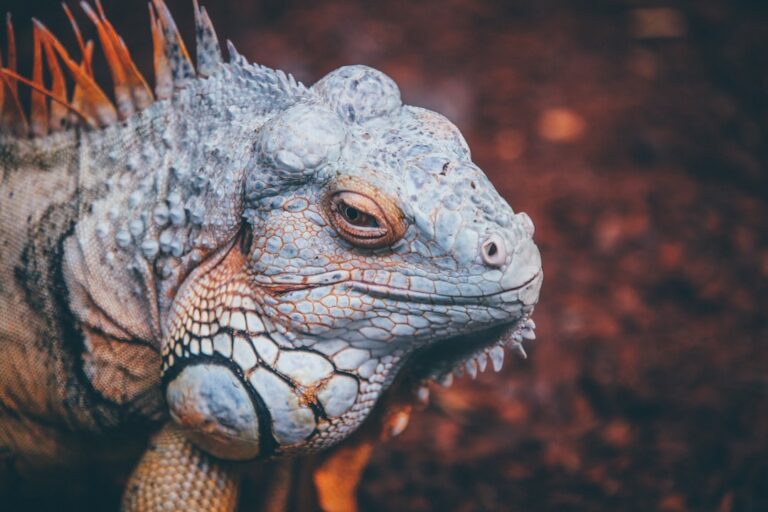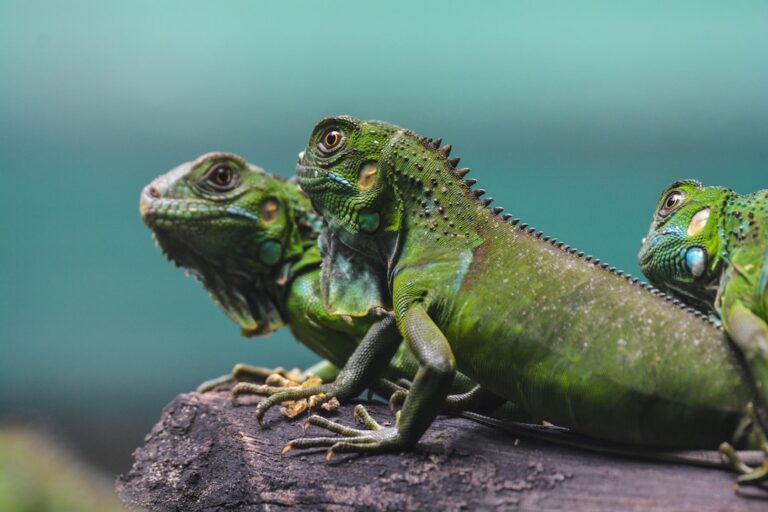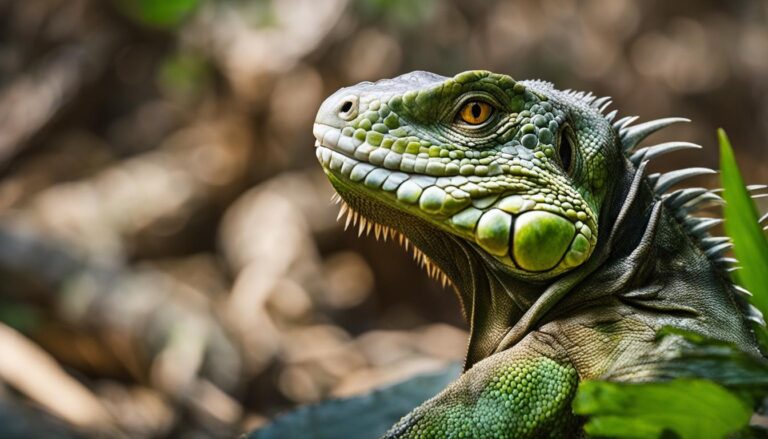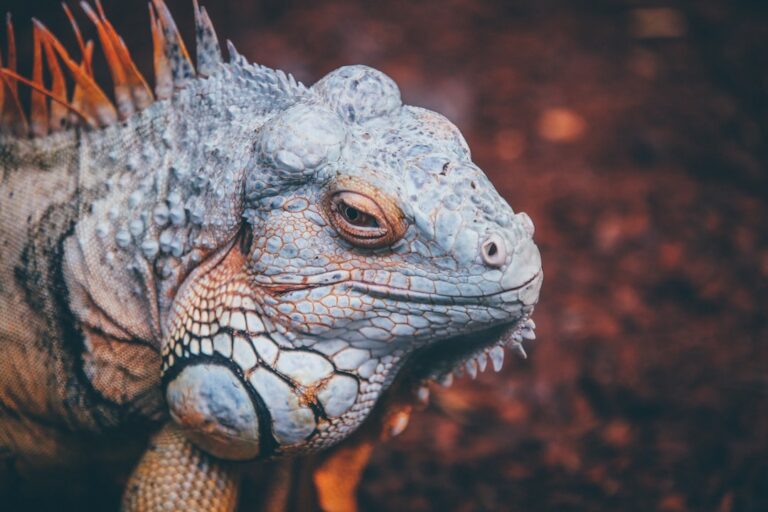Do Iguanas Run Fast?
Iguanas are a type of reptile that belong to the family Iguanidae. They are known for their distinctive appearance, with long tails, sharp claws, and a row of spines running down their backs. Iguanas are native to Central and South America, but they can also be found in parts of the Caribbean and the United States. They are herbivorous animals, primarily feeding on leaves, fruits, and flowers.
Understanding iguana speed and agility is important for a variety of reasons. For researchers, it helps them gain insights into the behavior and physiology of these fascinating creatures. For pet owners, it can help them provide appropriate care and create suitable environments for their iguanas. Additionally, understanding iguana speed can shed light on their interactions with predators and their ability to find food in the wild.
Table of Contents
Iguana Species and Their Running Speeds
There are several different species of iguanas, each with its own unique characteristics and running speeds. The green iguana (Iguana iguana) is one of the most well-known species and can reach speeds of up to 21 miles per hour (34 kilometers per hour). The marine iguana (Amblyrhynchus cristatus), found in the Galapagos Islands, is another species known for its speed, reaching speeds of up to 5 miles per hour (8 kilometers per hour) on land.
Other species of iguanas, such as the spiny-tailed iguana (Ctenosaura spp.) and the rock iguana (Cyclura spp.), have been observed running at speeds ranging from 10 to 15 miles per hour (16 to 24 kilometers per hour). These speeds may not be as impressive as those of the green iguana or the marine iguana, but they are still quite fast for a reptile.
Factors That Affect Iguana Running Speed
Several factors can affect an iguana’s running speed, including its size and weight. Generally, larger iguanas tend to be slower than smaller ones. This is because larger iguanas have more mass to move, which requires more energy and can slow them down. Additionally, the weight distribution of an iguana can also impact its speed. For example, if an iguana has a large, heavy tail, it may be more difficult for it to maintain balance and reach high speeds.
Another factor that can affect iguana running speed is the condition of their muscles and joints. Like any animal, iguanas need to be in good physical condition in order to run at their maximum speed. If an iguana has weak muscles or joint problems, it may not be able to run as fast as a healthy individual.
The Importance of Iguana Speed in the Wild
Iguana speed is crucial for their survival in the wild. It helps them avoid predators and find food. Iguanas are preyed upon by a variety of animals, including birds of prey, snakes, and mammals. Their ability to run quickly allows them to escape from these predators and increase their chances of survival.
In addition to avoiding predators, iguanas also rely on their speed to find food. As herbivores, they need to constantly search for vegetation to eat. By being able to move quickly, they can cover more ground and find food more efficiently.
Iguanas vs. Other Reptiles: Who Runs Faster?
When it comes to reptiles, iguanas are known for their impressive running speeds. However, they are not the fastest reptiles out there. Snakes, for example, are known for their incredible speed and agility. Some species of snakes, such as the black mamba (Dendroaspis polylepis), can reach speeds of up to 12 miles per hour (19 kilometers per hour). Lizards, on the other hand, can vary greatly in terms of their running speeds. Some species, like the collared lizard (Crotaphytus collaris), can run at speeds of up to 16 miles per hour (26 kilometers per hour), while others are much slower.
The reason why iguanas are faster than some reptiles but slower than others has to do with their body structure and physiology. Iguanas have long, muscular legs that allow them to take large strides and cover more ground with each step. Additionally, their tails provide balance and stability, allowing them to maintain their speed while running. These adaptations make them well-suited for running on land. However, they are not built for speed in the same way that snakes or certain lizards are.
Can Iguanas Outrun Predators?
While iguanas are fast runners, they are not always able to outrun their predators. Some predators, such as birds of prey, are capable of flying and can easily catch up to an iguana. However, iguanas have developed other strategies to evade capture. For example, they are excellent climbers and can quickly scale trees or other structures to escape from predators on the ground.
There are also predators that iguanas can outrun. Snakes, for example, rely on stealth and surprise to catch their prey. While some snakes are fast runners, they are no match for the agility and speed of an iguana. In these situations, the iguana’s ability to run quickly can be a lifesaver.
The Role of Temperature and Environment in Iguana Speed
Temperature and environment play a significant role in an iguana’s speed. Iguanas are ectothermic animals, which means that their body temperature is regulated by their environment. In cooler temperatures, their muscles may not function as efficiently, resulting in slower speeds. On the other hand, in warmer temperatures, their muscles can contract more quickly, allowing them to run faster.
The environment in which an iguana lives can also impact its speed. Iguanas that live in dense forests may have more obstacles to navigate, which can slow them down. Conversely, iguanas that live in open grasslands or on rocky terrain may have fewer obstacles and can reach higher speeds.
To adapt to different environments and maintain their speed, iguanas have developed various physiological and behavioral adaptations. For example, they may change their body position or posture to maximize their speed in different environments. They may also adjust their activity levels based on the temperature to ensure that they are able to run at their maximum speed.
How to Measure Iguana Running Speed
Measuring iguana running speed can be a challenging task for researchers. There are several methods that can be used to measure speed, depending on the specific research goals and constraints. One common method is to use a high-speed camera to record the iguana’s movements and then analyze the footage frame by frame to determine its speed.
Another method involves using a radar gun, similar to those used by law enforcement officers to measure the speed of vehicles. This method allows researchers to measure the speed of an iguana in real-time and can be particularly useful for studying wild populations.
Researchers may also use GPS tracking devices to monitor the movements of iguanas in the wild. These devices can provide valuable information about an iguana’s speed and behavior over an extended period of time.
Training Iguanas for Speed and Agility
While training iguanas for speed and agility is not as common as training dogs or horses, it is possible to do so with patience and consistency. Training can be beneficial for both researchers and pet owners, as it allows them to better understand the capabilities and limitations of these animals.
One technique used to train iguanas for speed and agility is positive reinforcement. This involves rewarding the iguana with treats or praise when it performs a desired behavior, such as running a certain distance or navigating an obstacle course. Over time, the iguana learns to associate the behavior with the reward and will be more likely to repeat it.
Another technique is clicker training, which involves using a clicker to mark the desired behavior and then rewarding the iguana. This method can be particularly effective for training complex behaviors, such as running through a series of obstacles.
It is important to note that training an iguana for speed and agility should be done under the guidance of a knowledgeable professional. Iguanas have specific needs and requirements, and it is important to ensure that their welfare is prioritized throughout the training process.
Understanding Iguana Running Speed and Its Significance
In conclusion, understanding iguana running speed and agility is important for researchers and pet owners alike. It provides valuable insights into the behavior and physiology of these fascinating creatures. It also helps pet owners provide appropriate care and create suitable environments for their iguanas.
Iguana speed is influenced by factors such as size, weight, muscle condition, temperature, and environment. These factors impact an iguana’s ability to run quickly in the wild, where speed is crucial for avoiding predators and finding food.
While iguanas are fast runners compared to some reptiles, they are not the fastest reptiles out there. Snakes, for example, are known for their incredible speed and agility. However, iguanas have developed other strategies to evade capture, such as climbing trees or structures.
Measuring iguana running speed can be challenging, but researchers have developed various methods, including high-speed cameras, radar guns, and GPS tracking devices. Training iguanas for speed and agility is also possible with patience and consistency, using techniques such as positive reinforcement and clicker training.
Overall, understanding iguana running speed and its significance is essential for gaining a deeper understanding of these remarkable creatures and ensuring their well-being in both the wild and captivity.
If you’re curious about the speed of iguanas, you might also be interested in learning about their ability to breathe underwater. Check out this fascinating article on Can Iguanas Breathe Underwater? to discover more about this unique reptilian adaptation.






